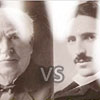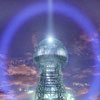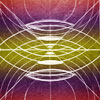Cosmic Mind Receivers
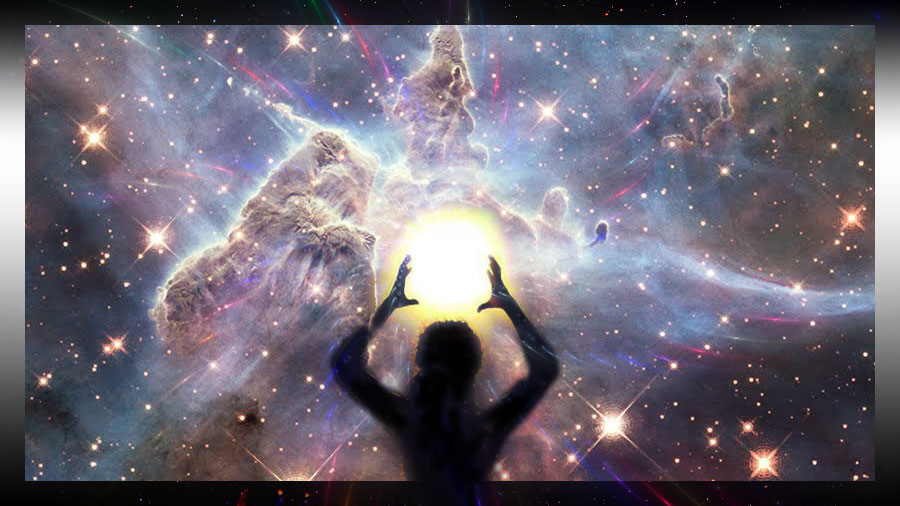 by W. Gordon Allen
by W. Gordon Allen
It is a strange world that we find in the laboratories of our Western science for if we cannot weigh it, see it, measure it, or get a specimen of it, it does not really exist. Research, renowned for the civilized gadgets which it puts on the market as advertised items before an eager public, is much to blame for this misconception. The sale of an intangible is pretty tough; the sale of an intangible reality is in our Western world nearly an impossibility. But that appears to be our problem.
For our next subject, let us talk to Mr. Ouspensky a bit about dimensions. We recommend P.D. Ouspensky’s A New Model Of The Universe to the reader who would like to delve more deeply into one facet of the problems of reality.
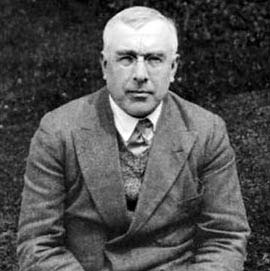 Ouspensky, in a remarkable bit of original thinking, postulates that a very excellent way for the mind trained in the three-dimensional world to “see” the fourth dimension is to follow this reasoning: Each dimension is just the projection itself as viewed in the next lower dimension. A single-dimensional line is the projection of a square; the two-dimensional square is a projection of a cube through space; the three-dimensional cube is a projection of the four-dimensional object. Or, as he says, the cube must be a trace, or projection, of a movement of all three of its sides simultaneously. The reader, having never seen a cube do this, might be lost for a moment. But it is quite easy to conceive of a vibrating three-dimensional solid—a cube or just a ball that vibrates with energy—and in that way it would be a projection of the fourth dimension into our three-dimensional world.
Ouspensky, in a remarkable bit of original thinking, postulates that a very excellent way for the mind trained in the three-dimensional world to “see” the fourth dimension is to follow this reasoning: Each dimension is just the projection itself as viewed in the next lower dimension. A single-dimensional line is the projection of a square; the two-dimensional square is a projection of a cube through space; the three-dimensional cube is a projection of the four-dimensional object. Or, as he says, the cube must be a trace, or projection, of a movement of all three of its sides simultaneously. The reader, having never seen a cube do this, might be lost for a moment. But it is quite easy to conceive of a vibrating three-dimensional solid—a cube or just a ball that vibrates with energy—and in that way it would be a projection of the fourth dimension into our three-dimensional world.
For understanding some of the fundamentals of matter, it might be well to think of the atom as just sitting there, vibrating with energy. The material atom that we know and measure with our material yardstick is certainly real, even to doctors of physics; but when it is considered as freely convertible into an energy dimension, which itself is just a projection of other, higher dimensions, we seem to have great conflict between the “reality” of the laboratory and the “reality” of dimensions beyond the electromagnetic theory (at least as it is taught today in universities). But if we follow this kernel of brilliance developed by Ouspensky, it will be not too difficult to postulate all kinds of dimensions beyond three, each of which is a projection of a next higher dimension, although we see readily but three.
The mind of Nikola Tesla made contributions to the science of today that are prodigious. It is strange how his contributions have become distorted 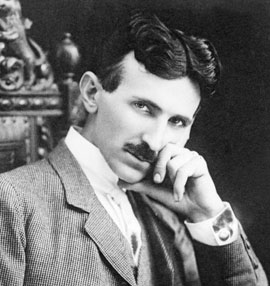 through the learned personal castigations of his contemporaries. College professors who have told generations of students the most amazing fabrications about Tesla seem unable to comprehend his contributions to electrical engineering; and some of his last promises of what he could do were taken as the ravings of a madman. Nevertheless, his alternating-current-machine patents alone are enough to give him a niche in the halls of greatness. The method of Edison, who stubbornly adhered to direct current, would have required a steam-power plant for each square mile of lighted city, but Tesla’s alternating current lights cities and rural areas, even thousands of miles from the generating stations. It is Edison who is revered by school children as the great inventor, while Tesla’s revelations of the greatness of pure inspiration from the cosmic mind are not understood and therefore are pretty much forgotten. Tesla did not fit the pattern: Edison managed to conform. Tesla is then forgotten: Edison revered.
through the learned personal castigations of his contemporaries. College professors who have told generations of students the most amazing fabrications about Tesla seem unable to comprehend his contributions to electrical engineering; and some of his last promises of what he could do were taken as the ravings of a madman. Nevertheless, his alternating-current-machine patents alone are enough to give him a niche in the halls of greatness. The method of Edison, who stubbornly adhered to direct current, would have required a steam-power plant for each square mile of lighted city, but Tesla’s alternating current lights cities and rural areas, even thousands of miles from the generating stations. It is Edison who is revered by school children as the great inventor, while Tesla’s revelations of the greatness of pure inspiration from the cosmic mind are not understood and therefore are pretty much forgotten. Tesla did not fit the pattern: Edison managed to conform. Tesla is then forgotten: Edison revered.
Tesla described to John J. O’Neill the manner of his illumination. He stated that in Europe one day his contemplation of a glorious sunset suddenly bloomed with a great new, brilliant, and true light. After that time it seemed that he called upon a similar psychic inspiration to help solve a great number of problems.
Tesla, who held numerous patents on A.C. machines, the Tesla turbine, and many many other electrical innovations, refused the Nobel prize because it appeared that he might have to share it with Edison. He felt that his mental efforts, backed by abstruse mathematics, were of a new and pure scientific nature far beyond the scope of Edison’s laborious puttering in his shop. Tesla held a European doctorate; Edison was a school failure; Tesla felt that the Nobel judges had their wires a bit crossed in suggesting that he share a prize with Edison.
Tesla’s preoccupations with resonance we consider of special importance so far as our present study is concerned. But we urge a study of O’Neill’s book on Tesla for those who wish to know a little of the truth about that great cosmic mind that touched upon the field of electricity . . . and for those, too, who light their homes with the fruits of his brilliance.
Before the first World War, Tesla planned on Long Island a world-wide broadcasting station, and he even constructed a great part of his transmitter. He planned to modulate the carrier with music (first broadcast by KDKA in Pittsburgh in 1920) and send information and public-service intelligence around the world for world betterment. Simultaneously, he was ready to follow his successful preliminary power broadcasts in Colorado with a full-scale plant broadcasting using the power of Niagara Falls. He was ready, therefore, if his money had held out, before World War I to give a world-wide broadcast service for entertainment, education, and news dissemination, and he was ready to light the lamps of the world . . . by wireless!
The author, in courses in electrical engineering at Louisiana Tech, Oregon State, Princeton, and M.I.T., both as an undergraduate and a graduate student, was told that Tesla’s Colorado experiments were not practical. True, they admitted that Tesla had succeeded in lighting 200 or so light bulbs up to twenty-six miles away, but he had used a whale of a lot of power to do it, much of which was just dissipated into the atmosphere. They did not know what he had done in Colorado.
Tesla had found out about the law of resonance, and he was the first to promulgate this magic, upon which our gigantic communications industry is based today. Metaphysics has long talked about the Law of Three and the Law of Seven; but the science laboratory was far behind.
Tesla’s experiments had shown him that the earth itself can be excited as a giant resonator. He stated that the frequency is in the neighborhood of 150 kilocycles. He attached the primary of his giant Tesla coil to about a 12 kva generator in the Colorado Springs powerhouse and the secondary to the ground and to a 150-foot wooden tower, on the top of which was a large copper ball. This ball was also connected to the other end of the secondary. He then proceeded to make giant lightning bolts.
The experiment was crude and would have been much more amazing if his generator had had nearer the resonant frequency of the earth, or if O’Neill had known more details. But he claimed to have bounced his waves around the world and back! Further, with a little Tesla coil, a reverse model of his generator, he was able to light lamps all over an area of Colorado by tapping power from the atmosphere and feeding it back to the lamps. What students of electrical engineering are not told is that it could have lit 200,000 or 20,000,000 lamps as well as 200, and it could have been done anywhere in the world—just as the number of radio receiving sets listening to a signal makes no difference at the transmitting station. India or China and other vast undeveloped areas could do well to look into power-broadcasting as the method of distributing power for light without paying patent rights to Westinghouse.
The whole point of our nominating Tesla as a man attuned to the cosmic mind is that he promulgated the conception of a “force field” that can be left stationary in space. This concept has still not been mastered, but it seems most practical. In the first years of the second World War he told the federal government that he could build a force barrier around the boundaries of the United States that would make it impregnable to air attack, but by that time he was old, broke, and out of grace with those who maintained the pattern.
But the mind that gave civilization so much should not have been ignored. That same mind seemed to have fantastic psychic rapport with a beautiful white pigeon in a manner that no other pigeon in the world could boast of—if pigeons boast, as human beings do. The love affair between Tesla and the pigeon was one of the great psychic insight.
An F.B.I. investigation of Tesla at that time would no doubt have labeled him a crackpot, one upon whom trust of the nation’s frontiers could certainly not be placed. This is the nation that then talked of freedom and how the police states of Europe stifled the human mind.
In the pattern of the state, all of Tesla’s writings were confiscated during the war by the office of the Alien Property Custodian. That might have been just a bit extra-legal—Tesla was not an alien but was a citizen of the United States. We behaved like the church of of Newton’s time and slammed the lid on much of Tesla, and like Newton’s esoteric box, closed his box to the world.
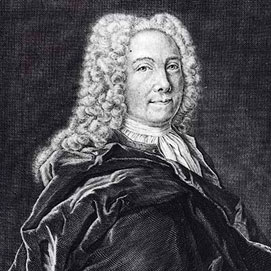 Here is another account of a “cosmic receiver.” In the early 1700’s lived one of the most amazing men of all time. As we study more and more of the life and writings of Immanuel Swedenborg (1688 to 1772) in the light of the latest discoveries of science, we find his understanding of the real state of the cosmos in which we live even more fantastic—even appallingly precise.
Here is another account of a “cosmic receiver.” In the early 1700’s lived one of the most amazing men of all time. As we study more and more of the life and writings of Immanuel Swedenborg (1688 to 1772) in the light of the latest discoveries of science, we find his understanding of the real state of the cosmos in which we live even more fantastic—even appallingly precise.
Swedenborg was the son of the Bishop of Uppsala, who at the time of Swedenborg’s youth was under suspicion of heterodoxy because in his sermons he told of his belief that the love of man for his fellows, and through this, communion with God were more desirable than the coldness of dogma and man’s interpretation of what God might wish. His son Immanuel graduated from the University of Uppsala in 1710 and traveled through Holland, Germany, France, and England, making a careful study of natural history and writing Latin verses. After five years of travel, he returned to his beloved university town of Uppsala and studied more closely the first principles of science and engineering. This detailed study he set down in the first of his many, many great works, Daedalus Hyperboreus, a record of mechanical and mathematical inventions and discoveries.
In 1716 the King of Sweden, noting this fine mind from a fine family, appointed him assessor extraordinaire of the Swedish Board of Mines. In 1718, when Charles II had Frederickshall under siege, it was Swedenborg who planned the transport of heavy machines of war over fourteen rugged miles and enabled his king to win the city. The king, realizing by that time that Immanuel was a most handy fellow to have around, made his appointment permanent. On the death of Charles II, his queen made Swedenborg a member of the nobility by adding to his name the “en,” which corresponds to the German von, and gave Swedenborg a seat in the house of nobles.
It must have been at that time that Swedenborg received his “enlightenment” (or cosmic illumination), for from that time on, he turned his mind more and more from war and mining. In the upper house he spoke on subjects of economics and strongly opposed any increase in the power of the Crown.
In 1724 he was offered the chair of mathematics at Uppsala. He declined with the statement that the science of mathematics seemed limited to theory, and that he felt there was more to understanding than just dry theory devoid of intuition and feeling. As early as 1721 the study of the “whole” of creation intrigued him, as it did during the rest of his life on this planet. It was in one of his first great works, his Principia that Swedenborg first put forth the idea of the formation of galaxies, in his conception of the nebular hypothesis. His conception of the atom is not very different than that of the present day, currently being revised and being finally even closer to that of Swedenborg than it has hitherto been thought to be.
In 1734 Swedenborg published his ideas about the real relation of the soul to the body. This brings us to one of the most fantastic bits of agreement of so-called “modern” findings with these two-hundred-year-old writings which have not even yet been really competently studied and interpreted. Swedenborg describes an inhabitant of the moon (of a space station thereon?) in such a way that it matches perfectly the picture of a little man downed in a UFO (flying saucer) that crashed near Mexico City in 1950!
Since Swedenborg wrote of the little moon “spirit” some two hundred years before the picture (see below) came to the author’s attention, his amazement knew no end when the author read this passage:
The spirits who thundered thus were not many, but few, and were as little as children; and yet on former occasions they terrified them [other spirits] by such noises, and yet were unable to do them any hurt. In order that I might know their nature and quality some of them descended from on high. . . . Two of them approached me and their faces appeared not unhandsome, but longer than the faces of other spirits. In regard to stature they appeared as children of about seven years. It was told to me by the angels that they were from the Moon . . . that whenever they utter their voices they thus thunder; and that thereby they terrify the spirits that are inclined to do them mischief, and put some to flight and thus they go with security whithersoever they are disposed.
. . . They showed, moreover, that the voice they uttered came from the abdomen like an eructation, making this thundering sound. [Not from vocal chords!] . . . It was perceived that owing to a particular circumstance, the inhabitants of the moon do not speak from the lungs, like inhabitants of other earths, but from the abdomen, and thus from a certain quantity of air there collected, by reason that the moon was not encompassed with an atmosphere like other earths. It was instructed that the spirits of the moon, in Grand Man, have relation to the ensiform cartilage or xiphoides, to which the ribs in front are joined, and from which descends the “fascia alba,” which is the fulcrum of the abdominal muscles. . . .
An examination of photographs of the UFO crewman shows indeed that he has a group of thick cartilages over his chest area, that he is about the 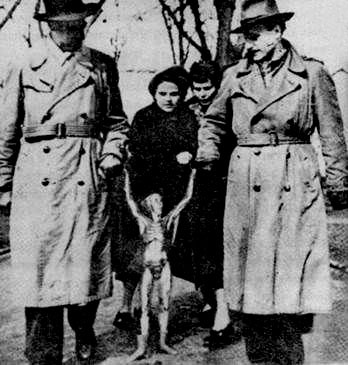 height described by Swedenborg, and that he is not a midget, because of his finely formed limbs, which are not characteristic of earthly midgets.
height described by Swedenborg, and that he is not a midget, because of his finely formed limbs, which are not characteristic of earthly midgets.
The veracity of Swedenborg, because of the great width of his learning, is not particularly to be questioned. His studies encompassed so many fields that his knowledge seems without a doubt to have come from the infinite. One great truth that he added to man’s compendium is the fact that the brain of man enlarges and shrinks with his respiration, not with his heartbeat. This demonstrates the extreme necessity of proper and deep breathing for efficient use of the brain as a thinking machine.
It might be ironic today, some two hundred years later, to expend great national effort to travel to the moon—only to find that the exquisite little moon man has already been on our planet and that, further, even two hundred years ago he was known and perfectly described by Immanuel Swedenborg of the Swedish University of Uppsala!
Excerpt from Space Craft From Beyond Three Dimensions
Posted in Nikola Tesla, Science For The New Age, Spiritualitywith comments disabled.


